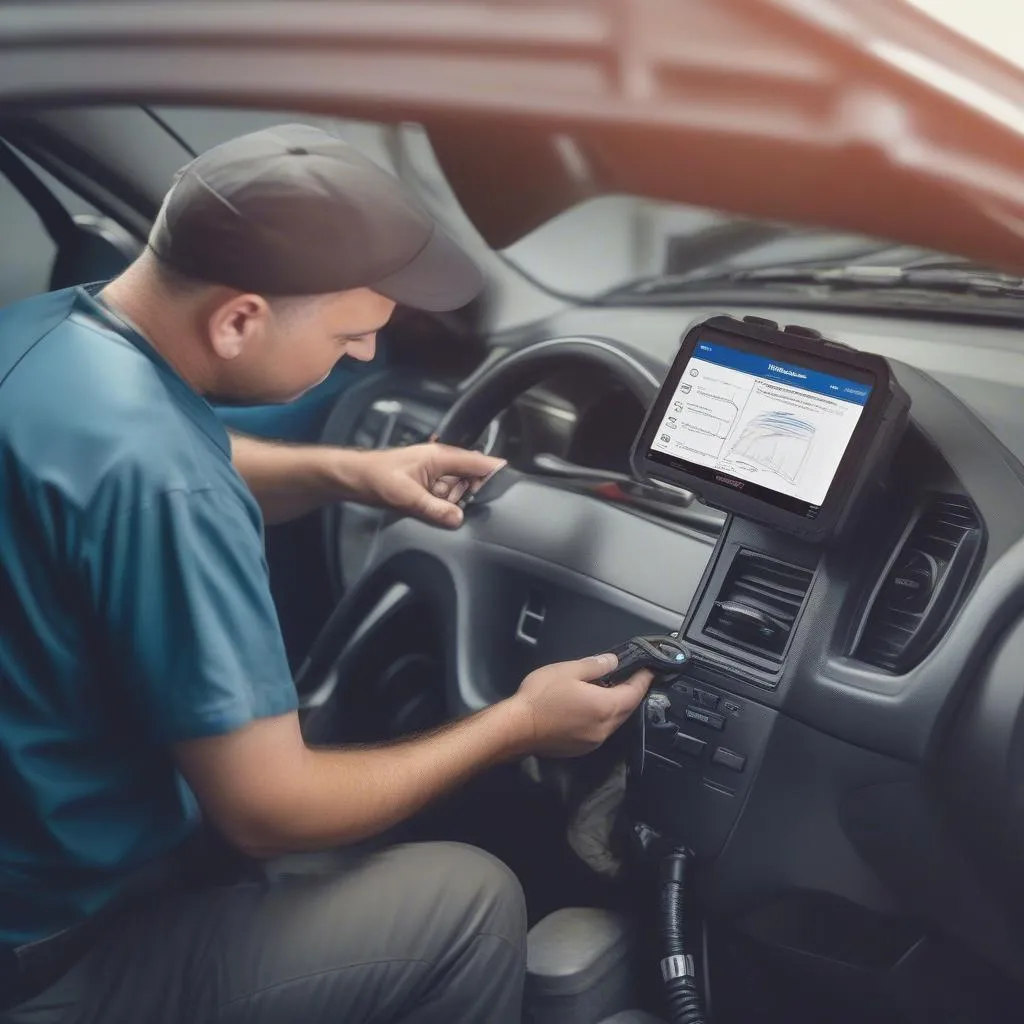Imagine this: you’re cruising down the Pacific Coast Highway in your sleek Audi A4, California sun warming your face. Suddenly, a warning light on your dashboard throws a wrench in your idyllic afternoon. Your car’s computer is trying to tell you something’s wrong, but it’s speaking in a complex language of codes and signals. This is where CAN and OBD come in – your Rosetta Stone to understanding your car’s inner workings.
Understanding the Acronyms: CAN and OBD
Before we delve into the differences, let’s break down these acronyms:
- CAN: Controller Area Network. Think of this as your car’s internal nervous system, a network of wires and microcontrollers that allows different components (like the engine, transmission, and airbags) to communicate with each other.
- OBD: On-Board Diagnostics. This is the interface, the port (usually located under the dashboard), that allows you or a mechanic to tap into your car’s computer system and access those diagnostic trouble codes (DTCs) that indicate a problem.
Why the Confusion?
The reason “CAN vs. OBD” pops up is that they’re often mentioned together, but they aren’t directly comparable. It’s like comparing the internet to your laptop. One is the vast network (CAN), and the other is the device you use to access it (OBD).
Here’s a simple analogy: Imagine a bustling city like New York. The CAN bus is like the intricate network of roads and highways connecting different boroughs and neighborhoods. The OBD port is like a taxi stand, providing a standardized point of access to navigate this network.
How CAN and OBD Work Together
When a fault occurs in your car, say a sensor malfunctions, a signal travels through the CAN bus. This information is then stored as a DTC in the car’s computer. You can then use an OBD scanner, plugged into the OBD port, to retrieve this code.
Think of it like this:
- Your car’s engine (let’s call him “Ethan Engine”) senses something is off and sends a message through the CAN network (the city roads).
- This message, a DTC (“Ethan Engine needs a check-up!”), is delivered to the car’s computer (City Hall).
- You, using an OBD scanner (the taxi), access City Hall (the computer) through a standardized entry point (the OBD port).
- You “read” the message and now know what needs attention.
Different Strokes for Different Folks: OBD1 vs OBD2
Adding another layer to this, we have different versions of OBD:
- OBD1: An earlier system, more manufacturer-specific and less standardized.
- OBD2: Introduced in the mid-1990s, this system standardized the diagnostic process, making it easier for mechanics and car owners to understand DTCs across different makes and models. You can learn more about the differences between OBD and OBD2 scanners in our dedicated article: OBD vs OBD2 Scanner: What’s the Difference and Which One Do I Need?
Decoding Common Questions:
-
“Can I use any OBD scanner on my car?” Not necessarily. While OBD2 standardized the port, compatibility depends on the scanner’s software and the car’s make and model. Some scanners are designed for specific brands or regions (like European cars). For a deeper dive into this topic, check out our article comparing OBD scanner and reader: OBD Scanner vs Reader: Key Differences Explained.
-
“What if my car is older than OBD2?” Older vehicles might use OBD1 or other proprietary systems. You might need specialized equipment or consult a mechanic familiar with your car’s make and model.
Beyond Diagnostics: The Expanding Role of CAN and OBD
While diagnostics are the primary use, CAN and OBD are becoming increasingly important for other applications:
- Advanced Driver-Assistance Systems (ADAS): Features like lane departure warning and adaptive cruise control rely heavily on data transmitted through the CAN bus.
- Data Logging and Performance Tuning: Enthusiasts and racers use OBD scanners to monitor engine parameters and optimize performance.
- Insurance Telematics: Some insurance companies use OBD devices to track driving behavior and offer personalized premiums.
 obd-scanner-tool
obd-scanner-tool
When in Doubt, Consult the Experts
While understanding the basics of CAN and OBD empowers you as a car owner, remember that modern vehicles are complex machines. If you encounter persistent warning lights or DTCs you can’t decipher, it’s always best to consult a qualified mechanic.
Pro Tip: “With the increasing complexity of vehicle electronics, it’s crucial to choose a mechanic who stays updated on the latest diagnostic tools and technologies,” advises Michael Turner, a veteran automotive engineer and author of “Automotive Electronics Demystified.”